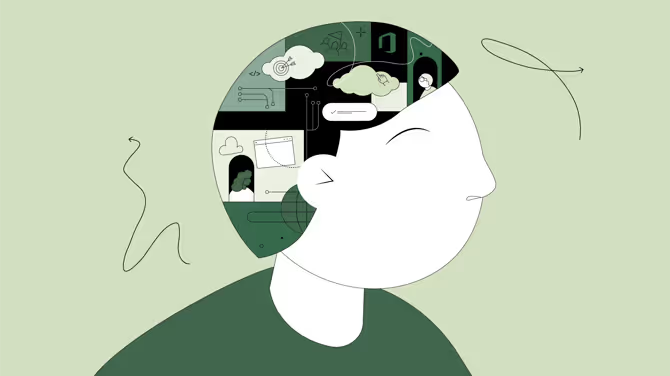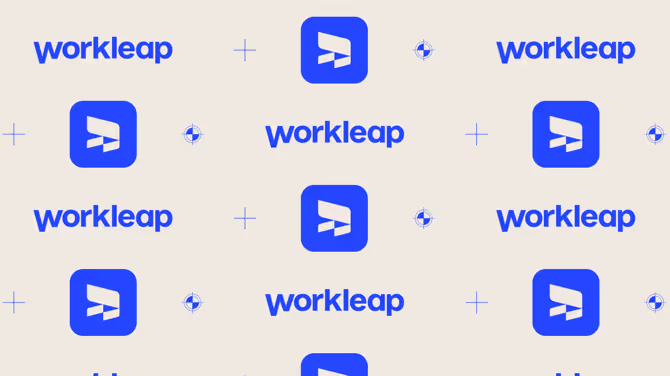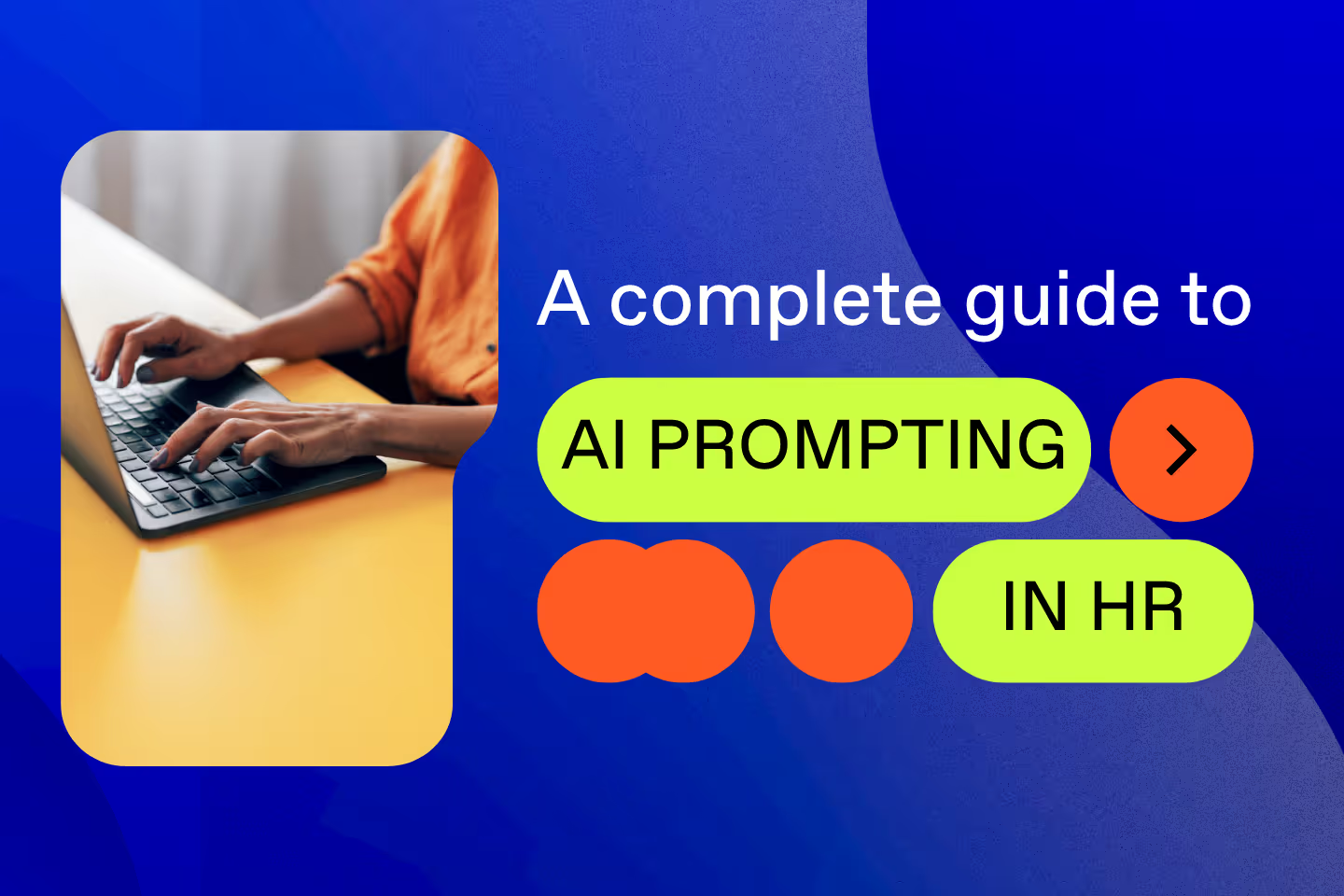A Workleap story on fostering innovation
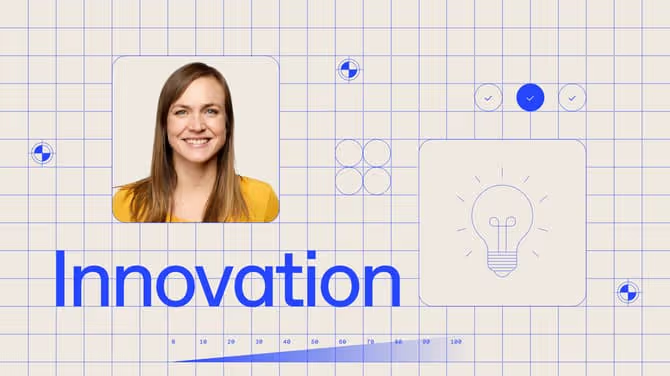
%20(1).png)
Guest article written by Valérie Gobeille, Director of Talent Management and Learning and architect of Workleap's "innovate" challenge.
Innovation is at the heart of what we do at Workleap. We help organizations enhance their employee experience and elevate their hybrid teams, and that requires a constant push to develop new ideas and solutions. But fostering a truly innovative culture within a growing company can be a challenge. You need to create an environment where people feel comfortable taking risks, collaborating across teams, and bringing their best ideas to the table.
A few years ago, we noticed we weren’t taking risks like we used to, and innovation wasn’t as core to our culture as it once had been. That’s why we decided to launch a company-wide initiative called “innovate.” It was our way of making room for experimentation and turning problem-solving into a collaborative challenge.
The vision: Nurturing a culture of proactive problem-solving
The innovate process emerged from a strategic goal my team championed: to nurture a culture of innovation that positively impacts our clients. We wanted to shift our focus from simply reacting to problems to proactively seeking solutions that would benefit both our customers and our company's long-term sustainability. And we wanted to achieve it with a people-led initiative.
The core idea behind innovate was simple: dedicate a specific period for employees to focus on innovation, following a structured approach. We decided to leverage the design thinking process as a framework. This not only provided a clear roadmap for generating ideas but also helped keep everyone focused and moving in the same direction.
Developing the challenge: Tapping into user pain points
When building out innovate, we drew inspiration from our internal innovation strategy, emphasizing the importance of understanding users, building prototypes, designing solutions, and putting them to the test.
We asked our HR Tech and ShareGate product directors to come up with one pressing challenge they knew their respective product’s users were facing and used that as the foundation for the different innovate tracks.
With our user-centered challenges in place, we turned our attention to our personal challenge: getting stakeholders in on the innovate action and securing high employee participation.
Navigating the hurdles: Getting everyone on board
Launching a new company-wide initiative always comes with its own set of hurdles. One of the biggest challenges we faced initially was getting everyone on board.
Stakeholders were concerned about the time commitment involved, especially for busy teams with tight deadlines. There were also worries that the challenge might disrupt existing project roadmaps. Both concerns were valid, but we were determined to carve room for exploration and were confident it was for the greater good of the entire organization.
Overcoming these concerns involved emphasizing that the challenge wouldn't disrupt existing plans. Instead, it was about identifying areas to augment our current offerings or address emerging customer needs, potentially saving time and streamlining our roadmap in the long run.
From brainstorming to reality: Kicking off innovate
Once we had buy-in from the stakeholders, the real fun began. The energy and excitement around the challenges were palpable.
In the first edition of innovate, we shared the challenge details and user pain points by sending out postcards with QR codes to every employee. We kicked off innovate at the height of the pandemic and had to get creative.
In the second edition, we brought our employees from across Canada together for a three-day long company gathering. We reintroduced innovate, had product directors present their respective product challenges, and held in-person workshops to flex the team’s design thinking muscles.
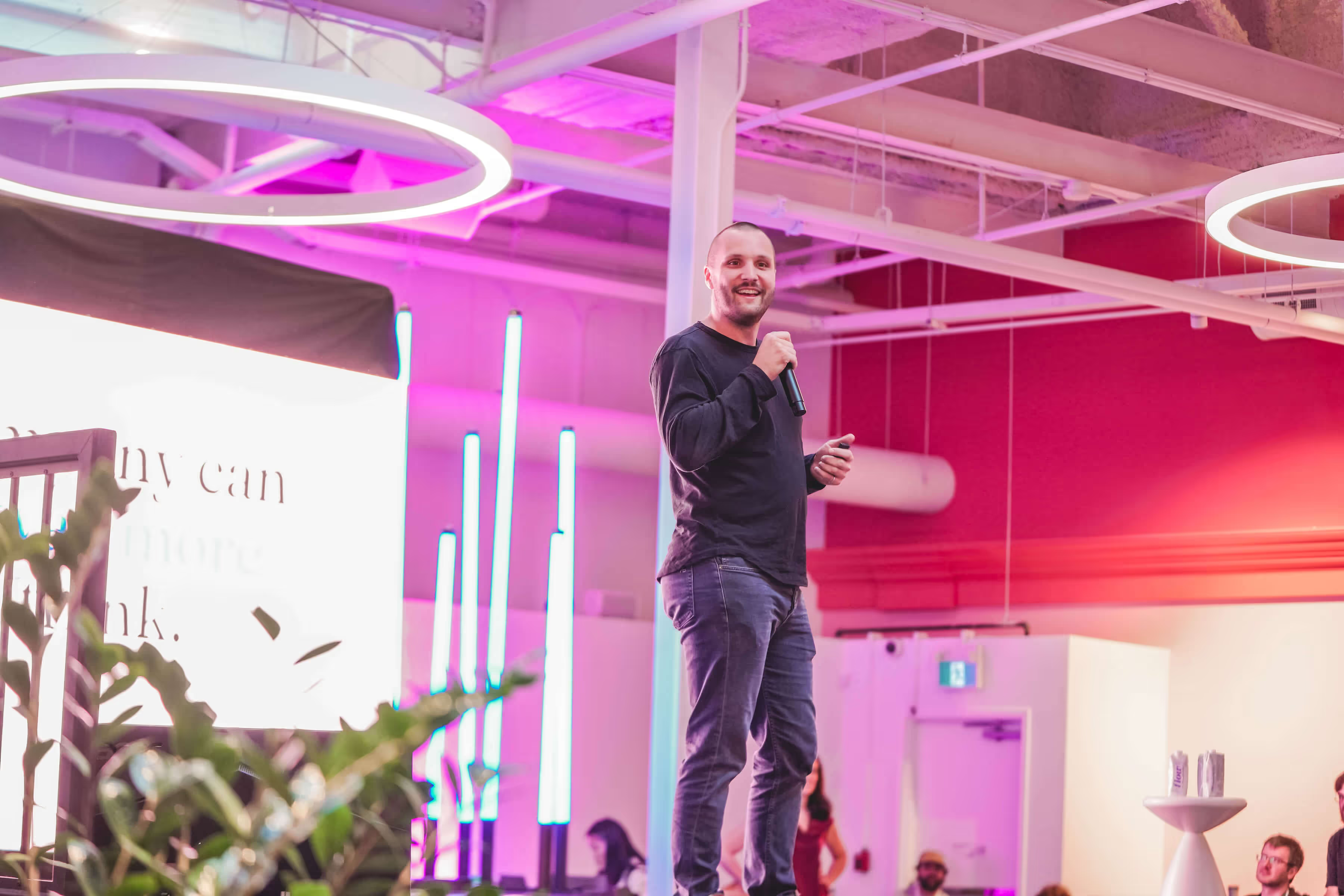
Coming together with carefully crafted workshops: The power of collaboration
Workshops were the backbone of both innovate editions. We centered them around brainstorming and teamwork, highlighting the power of diverse skill sets and perspectives. We saw teams coming together from different departments — product, marketing, software development — all working collaboratively to brainstorm and develop solutions.
{emphasize}Side note: If you’re looking to do something similar yourself, check out the innovation toolkit I included at the end of this article. It features resources to facilitate any creative process. Adapt it to your needs and you’ll be golden! {emphasize}
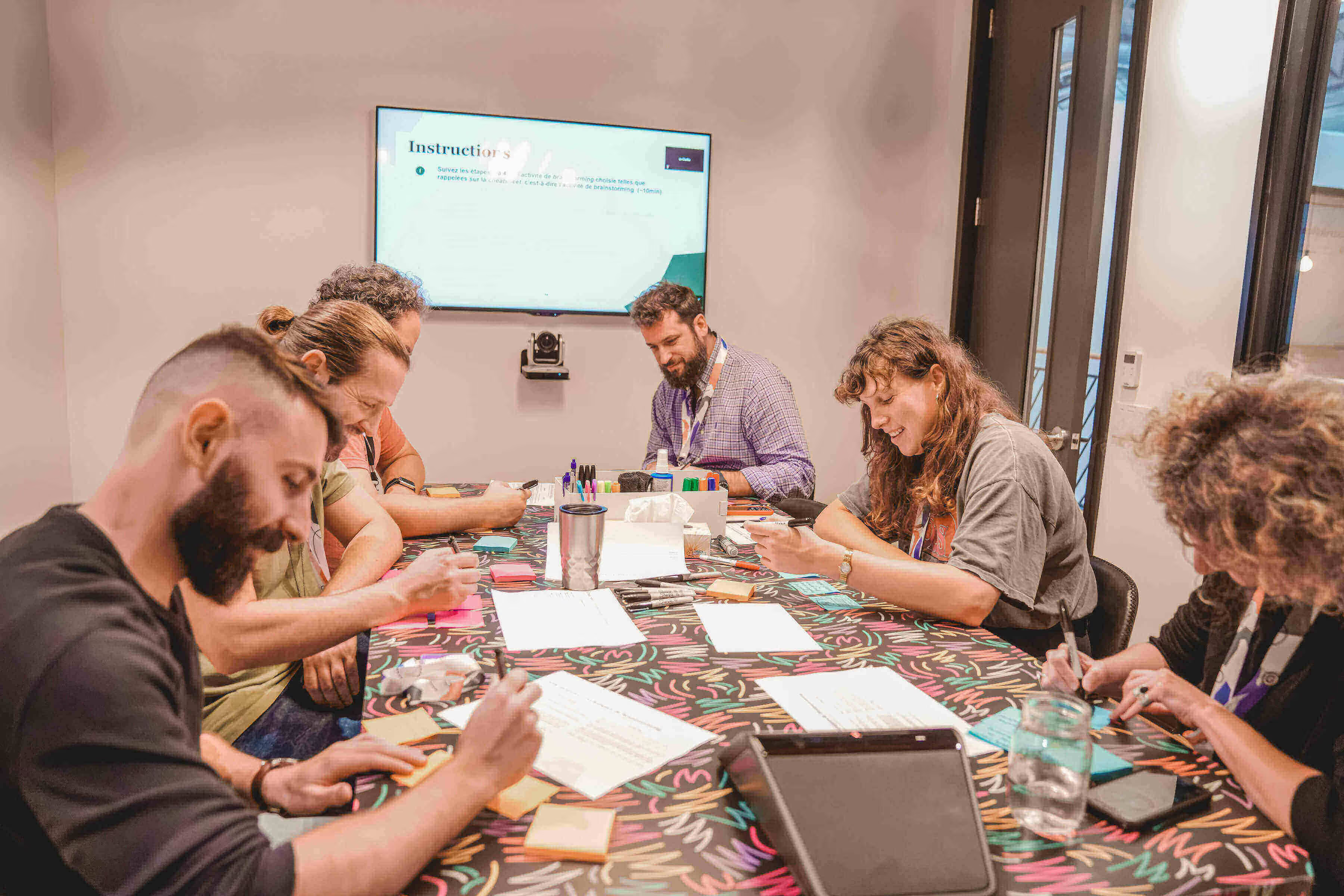
It was inspiring to see people who didn't usually interact on a day-to-day basis come together and leverage their unique skill sets. We were blown away by the creativity and quality of the ideas that emerged. A panel of sponsors evaluated submitted ideas and the chosen concepts then moved into an incubation phase where teams developed prototypes with the support of mentors. This emphasis on quick learning and iteration proved to be key.
Success stories and highlights: The genesis of "Good Vibes"
The first innovate challenge was full of valuable outcomes. A prime example is the HR segment of the challenge, which led to many creative prototypes designed to transform recognition sharing in the workplace.
Post innovate, our team combined various of the tested concepts and created "Good Vibes," a delightful way to say kudos to colleagues within an organization. I'm happy to report that Good Vibes is no longer just a concept; it's a real feature within Workleap today — and a fan favorite among our clients.
Lessons learned: Looking forward and refining for the future
Of course, running innovate for the first time didn't come without its learning experiences. One key takeaway was the importance of thorough pre-planning. We realized that the more prepared we were upfront, the smoother the entire process would run. This meant having clear deadlines, well-defined judging criteria, and a strong communication plan to keep all stakeholders informed.
Another important lesson was the need to create a positive feedback loop to incentivize participation. In the first iteration, some teams expressed feeling a bit disconnected from the final results. To address this, in the following edition of innovate, we aimed to have a better feedback loop from product directors as to what would happen with chosen concepts. There are still lots of fronts on which we can improve in further editions!
The innovate challenge: A springboard for innovation
The innovate challenge wasn't just about creating new features; it was about fostering a culture of proactive innovation and ongoing learning. We learned that the journey of innovation is just as important as the final product. By embracing collaboration and iteration, we can continuously improve and adapt to new challenges.
This article highlighted the wins and valuable lessons gleaned from both editions of innovate. You might be wondering – will there be an innovate 3.0? The short answer is maybe. The long one is that carving time and energy for projects like these is tough. Even with two successful challenges under our belt, prioritization continues to be a constant battle. However, the positive impact of innovate motivates us to find ways to make innovation a more regular fixture in our company culture.
We remain dedicated to fostering an environment where every employee feels empowered to contribute ideas and help shape our innovative future. The exact format of the next challenge might evolve, but our dedication to a culture of innovation will not.
🎁 Bonus: Kick off your next creative process with our tried-and-true innovation toolkit
If you're looking to boost innovation, consider a similar initiative. Start small, focus on collaboration, keep it user-centric, and choose a structured process. You might be surprised by all the creativity that emerges from employees.
Before you go, be sure to save this innovation toolkit below! We used and shared these exact resources with our team, and they helped us make innovate a success. Whether you choose to go big with a dedicated event or simply want to move the needle on innovation in daily work, this toolkit will get you there sooner.
The Double Diamond Design Process
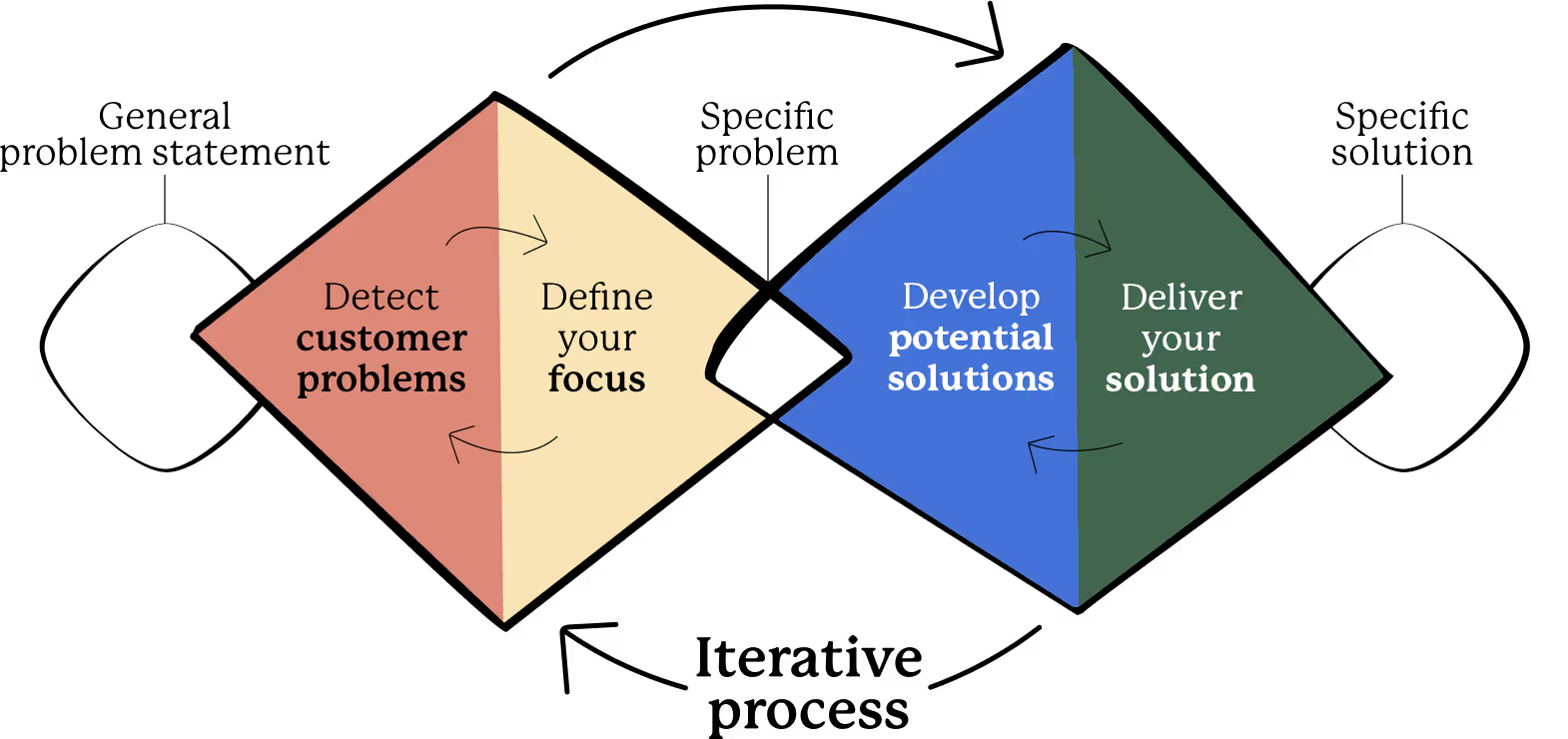
- Detecting customer problems
Is it viable: Understanding the market
Is it desirable: Understanding potential users
- Empathy mapping (Miro has a > template you can use)
- Value proposition canvas & video (Miro > template)
Is it feasible: Understanding the business opportunity
Brainstorm potential sub-problems from the previous analysis (market, users, business)
- Defining your focus
Mapping your users' experience
- Mapping the persona's experience & video (Miro > template)
Selecting what problem to solve
- Developing potential solutions
Brainstorming high-level solutions
Designing a viable, desirable, and feasible solution
- Business model canvas & video (Miro > template)
- Design principles by Gabriel Faucon
Prototyping
Testing and analyzing results
- Delivering your solution
Visual design and branding
Presenting your work to sponsors
The future of employee experience starts with you.


%20(1).avif)


.avif)
.avif)
